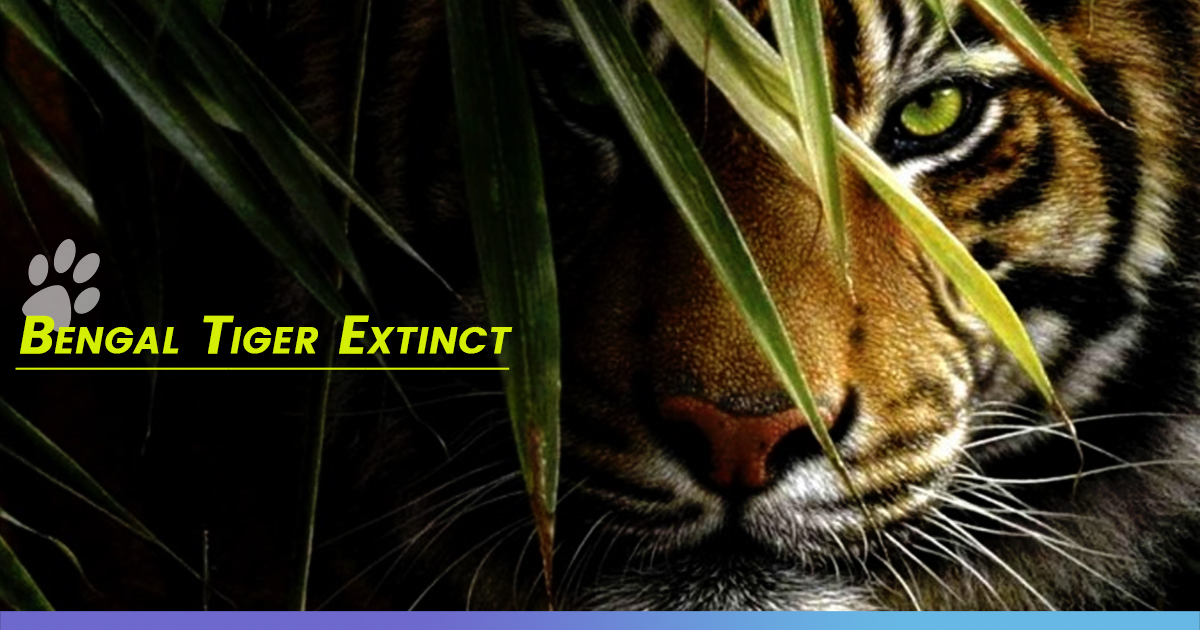“… 1 million animal and plant species are now threatened with extinction, many within [a few] decades, more than ever before in human history…”, says Global Assessment Report by the Intergovernmental Science-Policy Platform on Biodiversity and Ecosystem Services (IPBES) published on May 6th, 2019. According to the report, and a recent study published in the journal “Science of The Total Environment”, Bengal tiger is at the verge of getting extinct. This would happen primarily because of a dramatic habitat loss owing to the combined effects of climate change and the rise in sea-level. Sundarbans is their last habitat.
According to IPBES’s Chairman’s statement, “The loss of species, ecosystems and genetic diversity is already a global and generational threat to human wellbeing. Protecting the invaluable contributions of nature to people will be the defining challenge of decades to come. Policies, efforts and actions – at every level – will only succeed, however, when based on the best knowledge and evidence. This is what the IPBES Global Assessment Provides”. The report reveals the severity of the loss of nature and natural resources and its consequences for humanity.
New #GlobalAssessment report finds that #ClimateChange is a key driver for species extinction 👉 https://t.co/36vtJxc3lg For global warming of 1.5 to 2 °C, majority of terrestrial species ranges are projected to shrink profoundly @IPBES pic.twitter.com/R31tPOyQeu
— UN Climate Change (@UNFCCC) May 6, 2019
1 million animal and plant species are now threatened with extinction, many within decades, more than ever before in human history.
It is urgent to act now to avoid catastrophe!
More on the @IPBES #GlobalAssessment Report ➡️ https://t.co/XGA1SrvlvS #IPBES7 #Biodiverstiy pic.twitter.com/7zN19zs4q5
— UNESCO (@UNESCO) May 6, 2019
How many species are threatened with extinction? it varies according to taxonomic group, but averages about one in four for the groups we’ve assessed to date. Here’s the figure we put together for the @IPBES #GlobalAssessment pic.twitter.com/22yyouJzvN
— Stuart Butchart (@stubutchart) May 6, 2019
Sunderbans & Royal Bengal Tiger
Their only major habitat of Bengal Tiger is the Sundarbans. The Sundarbans is the largest single block of mangrove forest ecosystem and a UNESCO world heritage site. It covers parts of India and Bangladesh, spanning an area of over 60,000 km2. It is home to one of the richest gene pools for flora and fauna in the world. According to the report, “This mangrove is a habitat for a large number of species of mammals (42), birds (300), reptiles (35), and amphibian (8) including the largest population of the Bengal Tiger (Hoq, 2007)… [but] Not only the biodiversity but also the very existence of the forest is under threat due to the climate change and associated sea level rise (Ahmad et al., 2010; Rahaa et al., 2014). Moreover, Sundarbans in Bangladesh is also facing serious problem due to the lack of freshwater supply from some transboundary rivers (Islam & Gnauck, 2009).”
This suggests a rapid decline in the population of the Bengal Tiger population. According to the study, the adverse and pronounced impacts of climate change will wipe out the Sundarbans by 2070 resulting in a complete loss of habitat for the remaining few hundred tigers.

https://doi.org/10.1016/j.scitotenv.2019.01.383
The tiger population has been on a steady decline since the early 20th Century, with a reduction in the number of tigers from more than 100,000 in the 1910s to less than 3,500 in 2010, as reported in this study. This has been primarily due to hunting and poaching, but also in parts due to the loss of habitable ecosystems due to deforestation. The conservation efforts which saw a rapid increase since the early 1970s helped in bringing the reduction in check but has failed to stop it or reverse its direction. Now, with the added threat of climate change, the Tiger population may go extinct sooner than expected.
As reported by The New York Times, it is not just the loss of habitat that would impact the tiger population but also other impacts of climate change such as the warming of the atmosphere, extreme weather conditions such as cyclones, clashes with human population as the tigers stray in search of new land and so on.
Quoting Prerna Singh Bindra, the author of “The Vanishing: India’s Wildlife Crisis”, the report concludes with a pressing question: “Where do you put these tigers? Where is a suitable undisturbed habitat on this crowded planet?”












